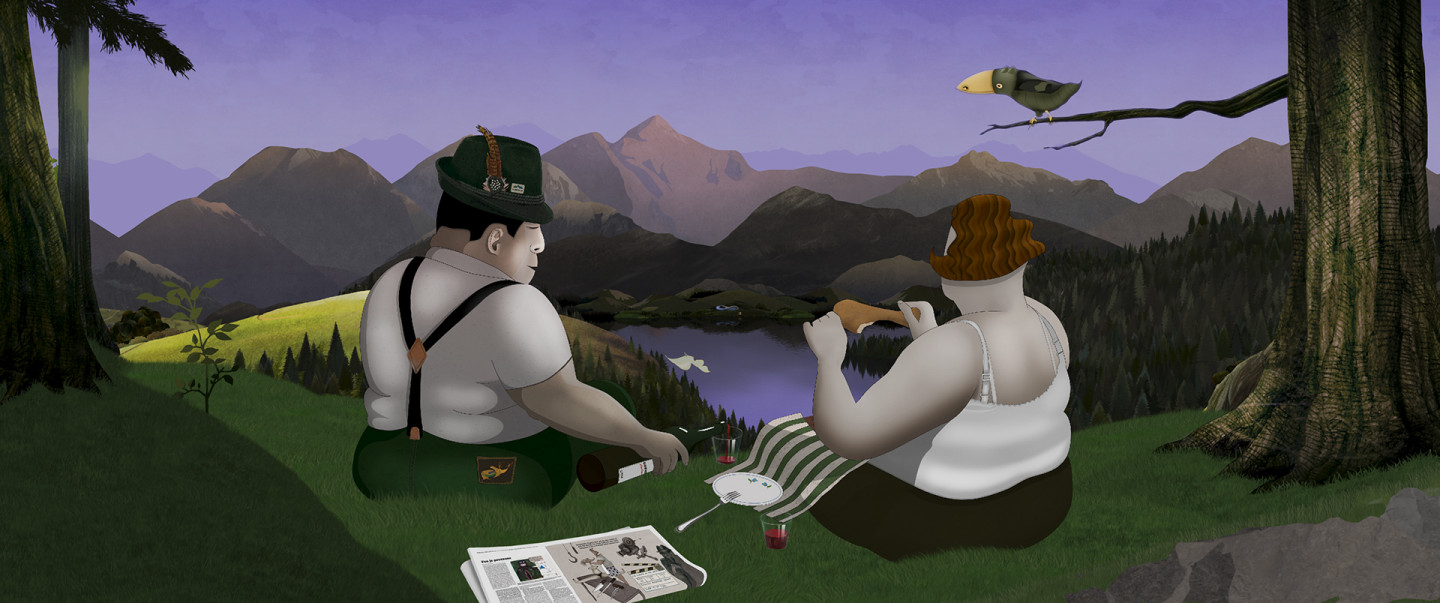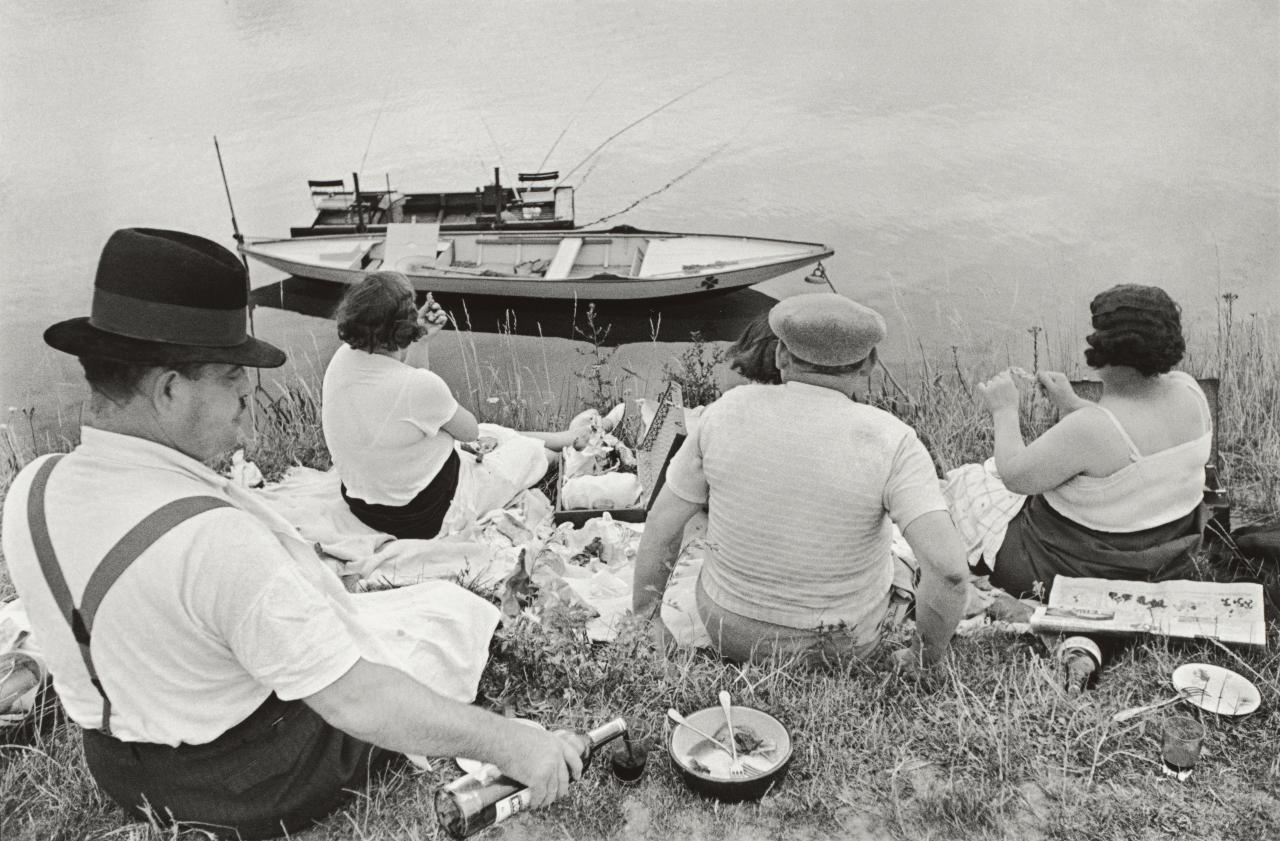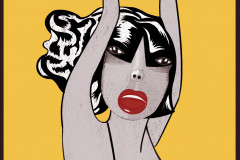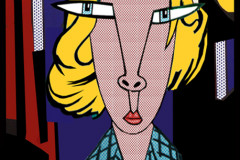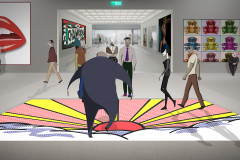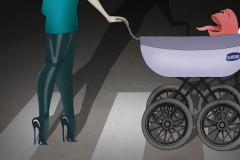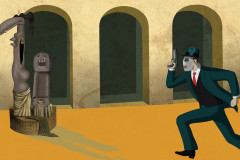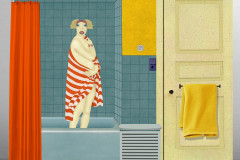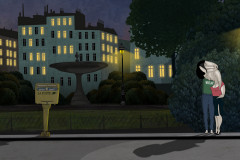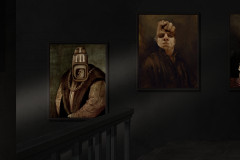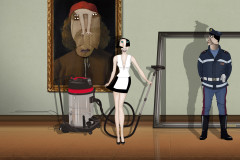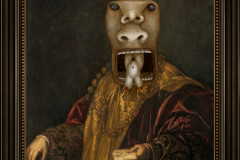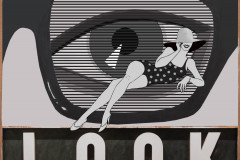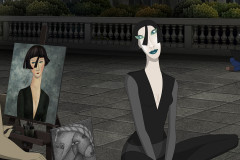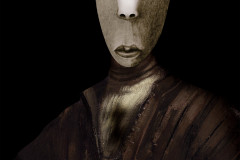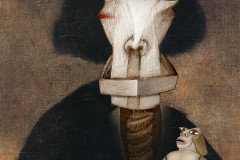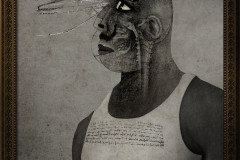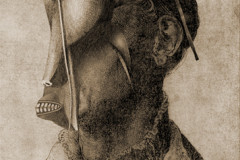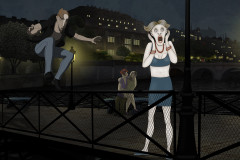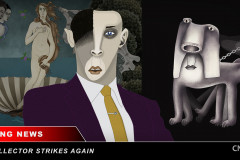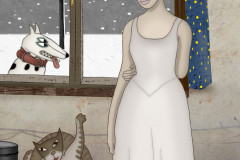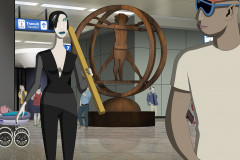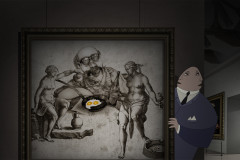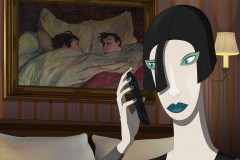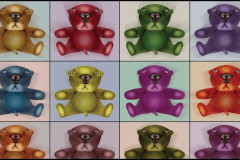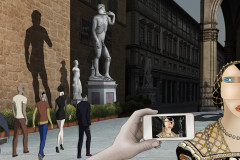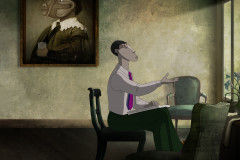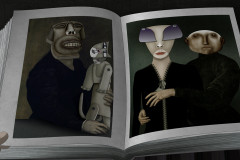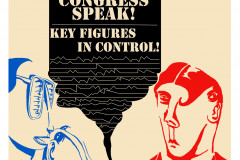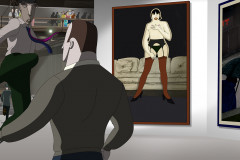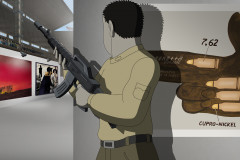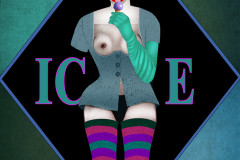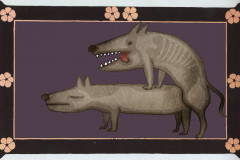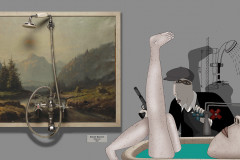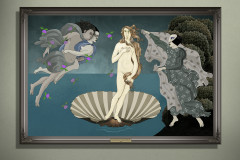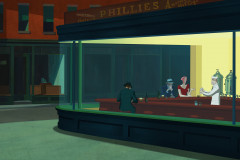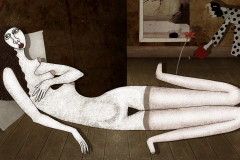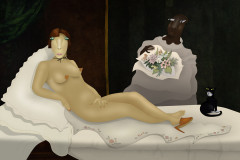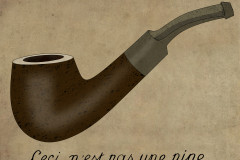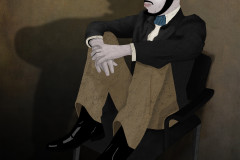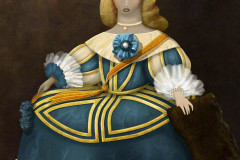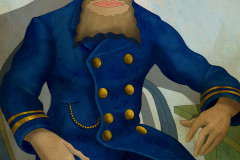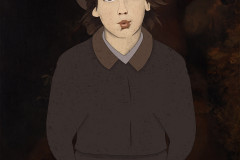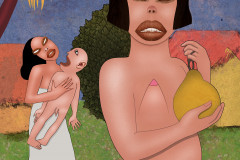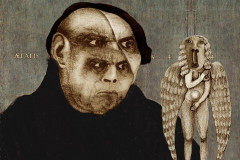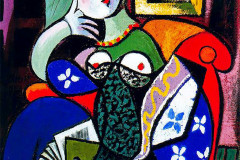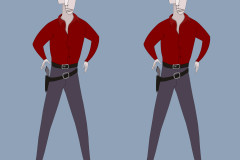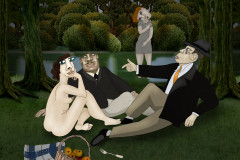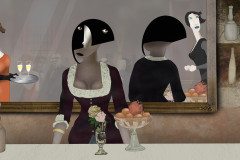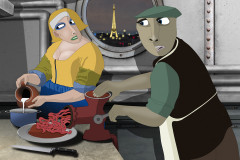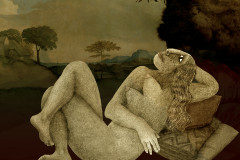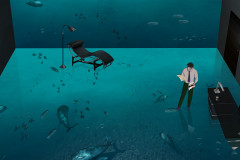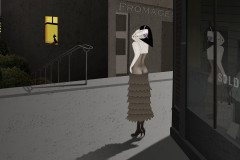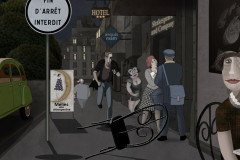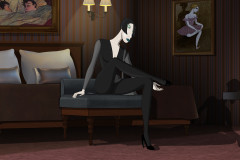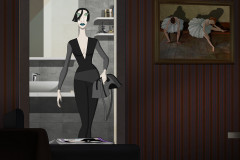Cartier-Bresson, Henri (1908-2004): Juvisy – Vasárnap délután a Marne folyó partján, 1938. A francia fotóművész szerint „a fényképezés az élet egyik formája”. Képei pedig a maga körül látott életformák sűrítményei, egyszerre pillanatképek és kor- és társadalomrajzok. Mint ez a párizsi munkások kiruccanását, folyó parti piknikjét ábrázoló fotó. A polgári „nagy vasárnapi ebédek” és a munkás majálisok hangulata keveredik – az étkezésnek bármely társadalmi osztályban kiemelt szerepe van. A Ruben Brandtban csak két szereplőt látunk viszont a társaságból, immáron alpesi környezetbe helyezve, amikor Mimi Franciaországból a doktor szlovéniai klinikája felé tart.
Cartier-Bressonnak sok más híres mondása is van a fényképezésről, legtöbbször azt idézik tőle, miszerint a fénykép készítésének pillanatában „a fej, a szem, a szív is ugyanazért működik”. Tehát a fényképész tudja, mit akar, azt meglátja és még érez is közben – érzékeny az emberi tényezőre. Ez a hitvallás egyben azt is jelenti, hogy az elkapott pillanatképnek tűnő alkotások nagyon is tudatos választás eredményei. Ez a kép például egy olyan sorozat része volt, amelyet az 1930-as években baloldali újságoknak dolgozó Cartier-Bresson a Regards c. lap megbízására készített. Feladata az volt, hogy dokumentálja, milyen társadalmi hatása van annak a francia szocialista kormány által elfogadott törvénynek, miszerint a munkások évente két hét fizetett szabadságot kapnak. A kép nem szájbarágós propaganda, hanem empátiával, de kis kívülállással is elkészített munka.
Henri Cartier-Bresson (1908–2004): Juvisy – Sunday Afternoon on the Banks of the Marne, 1938
The French photographer once said, “Photography is a way of life.” His images are distillations of the lives around him—at once snapshots and nuanced portrayals of society and its time. This photo, depicting Parisian workers on a riverside picnic, blends the ambiance of grand bourgeois Sunday lunches with working-class May Day outings. Regardless of class, food and mealtime remain central to human life. In Ruben Brandt, Collector, we see only two of these people again, now relocated to an Alpine landscape as Mimi travels from France toward the doctor’s Slovenian clinic.
Cartier-Bresson is famous for many quotes about photography, most notably that “the head, the eye, and the heart must work together” in the decisive moment of capturing an image. That means the photographer knows what to look for, sees it clearly, and feels it deeply—all while reacting sensitively to the human element. Though many of his works appear spontaneous, they are often the result of carefully considered timing and composition. This particular photograph was part of a series commissioned by Regards, a left-wing publication in the 1930s. Cartier-Bresson’s task was to document the social impact of a new law by the French socialist government that granted workers two weeks of paid vacation per year.
Rather than overt propaganda, this photo quietly captures the change—empathy and a slight observer’s distance coexist in a single, poignant moment.






